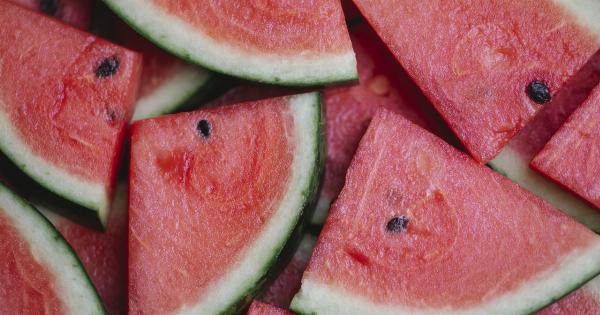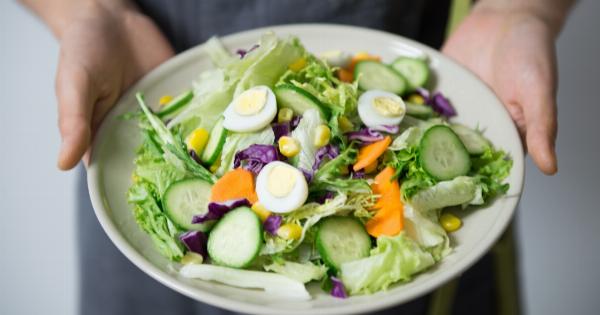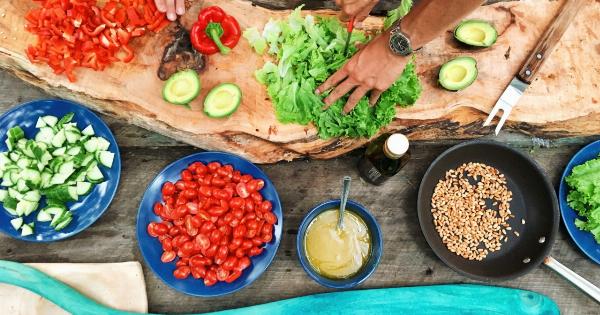When it comes to healthy eating, incorporating plenty of green foods into your diet is essential.
Green vegetables are packed with important nutrients like vitamins, minerals, and antioxidants that help to nourish your body and support overall wellbeing. Whether you are a vegetarian, vegan, or simply looking to add more plant-based meals to your routine, a green meal offers an abundance of health benefits.
In this article, we will explore what a green meal should consist of to ensure you get the most out of your plant-based dishes.
1. Leafy Greens
Leafy greens should form the foundation of any green meal. These include vegetables like spinach, kale, lettuce, Swiss chard, and collard greens. Leafy greens are rich in vitamins A, C, and K, as well as minerals like calcium, iron, and potassium.
They are also high in fiber, which aids in digestion and helps to regulate blood sugar levels. Try adding a mixture of leafy greens to your salad, stir-fry, or smoothie to increase your vegetable intake.
2. Cruciferous Vegetables
Cruciferous vegetables are another key component of a green meal.
These vegetables, which include broccoli, cauliflower, cabbage, and Brussels sprouts, are not only high in nutrients but also contain compounds that have been linked to a reduced risk of chronic diseases, including cancer. Cruciferous vegetables are excellent sources of vitamins C and K, as well as folate and fiber. They can be enjoyed raw in salads, steamed, or added to stir-fries and soups.
3. Green Peas and Beans
Green peas and beans, such as chickpeas, lentils, and edamame, are fantastic sources of plant-based protein and fiber. They are also packed with vitamins and minerals, including iron, magnesium, and B vitamins.
Incorporating green peas and beans into your meals adds a satisfying texture and increases the nutrient density of your plate. Enjoy them in hearty soups, stews, salads, or make them into delicious veggie burgers.
4. Herbs and Spices
Add some flavor and extra nutrients to your green meals by using a variety of herbs and spices. Fresh herbs like basil, parsley, cilantro, and mint not only enhance the taste but also provide antioxidants and essential vitamins.
Garlic, ginger, turmeric, cumin, and paprika are some of the spices that can be used to add depth and complexity to your dishes. By including herbs and spices, you can transform a simple green meal into a flavorful and exciting experience.
5. Avocado
No green meal is complete without the addition of avocado. Avocados are an excellent source of healthy fats, fiber, and a wide range of vitamins and minerals. They also contain antioxidants like lutein and zeaxanthin, which are essential for eye health.
The creamy texture and mild flavor of avocados make them a versatile ingredient that can be used in salads, sandwiches, smoothies, or as a topping for grain bowls.
6. Seaweed
Seaweed may not be a common ingredient in many diets, but it is definitely worth including in your green meals. Seaweed is loaded with vitamins A, C, E, and K, as well as calcium, iron, and iodine.
It is also an abundant source of antioxidants and contains unique compounds that have been shown to have anti-inflammatory and anti-cancer properties. Add dried seaweed to your salads or soups or try making nori wraps filled with colorful vegetables and tofu.
7. Green Fruits
Don’t forget about green fruits when planning your green meals. Fruits like kiwi, green apples, green grapes, and honeydew melon contribute to the overall nutrient profile with their vitamin C and dietary fiber content.
These fruits can be eaten on their own as snacks, added to smoothies, or incorporated into fruit salads for a refreshing and nutritious treat.
8. Whole Grains
To make your green meal more satisfying and balanced, include a serving of whole grains. Whole grains like quinoa, brown rice, barley, and whole wheat pasta provide the necessary complex carbohydrates, fiber, and B vitamins.
By combining whole grains with your green vegetables, legumes, and other ingredients, you create a well-rounded meal that will keep you energized and satisfied for longer.
9. Nuts and Seeds
Bringing some crunch and additional nutrients to your green meal can be achieved by incorporating nuts and seeds. Choose from a variety of options such as almonds, walnuts, chia seeds, flaxseeds, and sunflower seeds.
These provide heart-healthy fats, protein, fiber, and an array of minerals and antioxidants. Sprinkle them over your salads, stir them into your porridge, or use them to make homemade granola bars.
10. Plant-based Protein Sources
For those following a vegetarian or vegan diet, ensuring an adequate intake of protein is crucial. Fortunately, there are many plant-based protein sources that can be included in a green meal.
Besides the aforementioned peas and beans, tofu, tempeh, seitan, and plant-based protein powders are excellent options. These protein-rich foods not only provide essential amino acids but also contribute to the overall taste and texture of the meal.
Conclusion
A green meal should consist of a variety of leafy greens, cruciferous vegetables, green peas and beans, herbs and spices, avocado, seaweed, green fruits, whole grains, nuts and seeds, and plant-based protein sources.
By incorporating these elements into your meals, you can create a well-balanced and nutrient-rich plate that supports your overall health and wellbeing. Experiment with different combinations, seasonings, and cooking methods to discover the flavors and textures that suit your preferences. Enjoy the benefits of a green meal and feel the vitality it brings to your daily life.





























